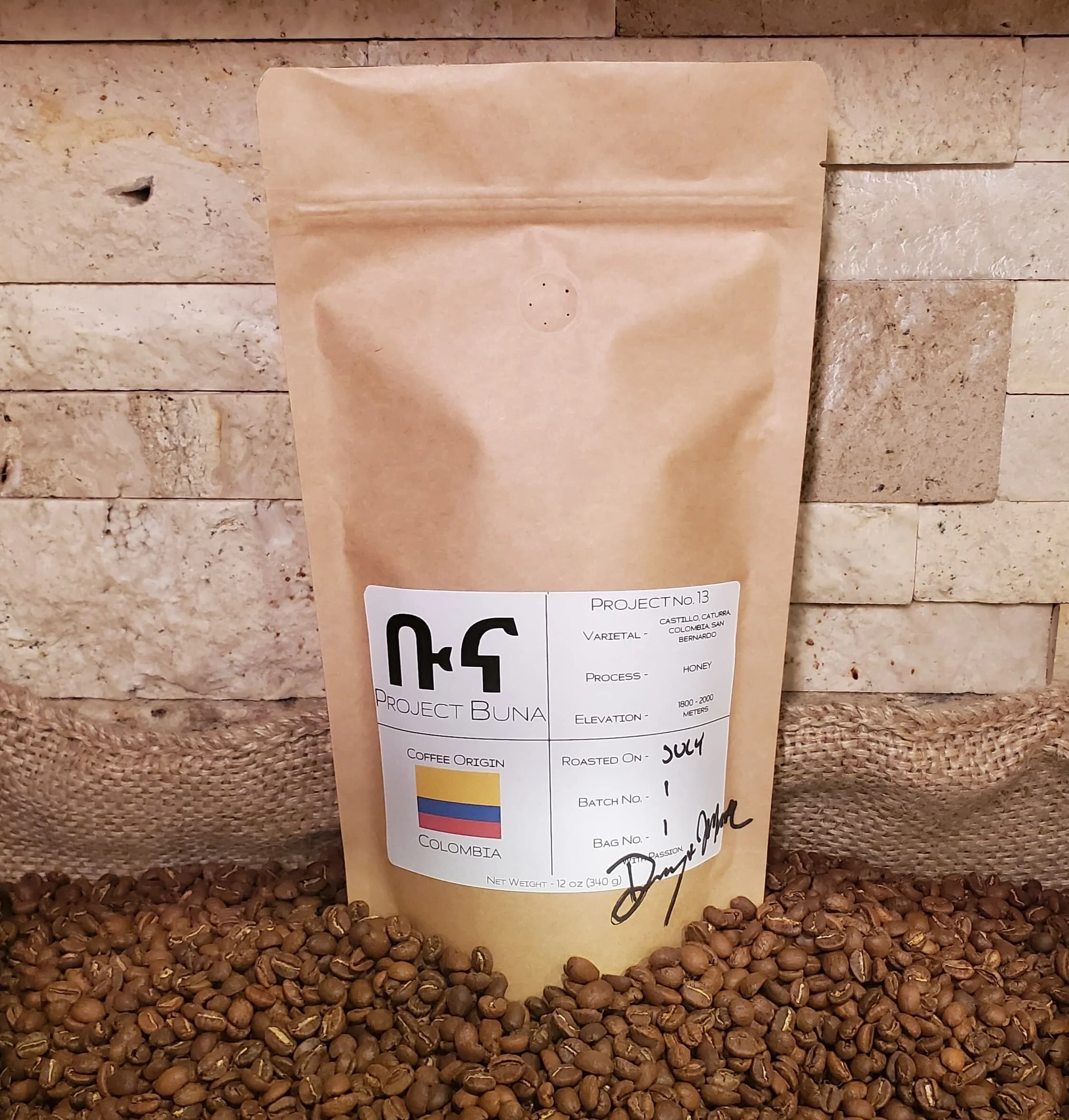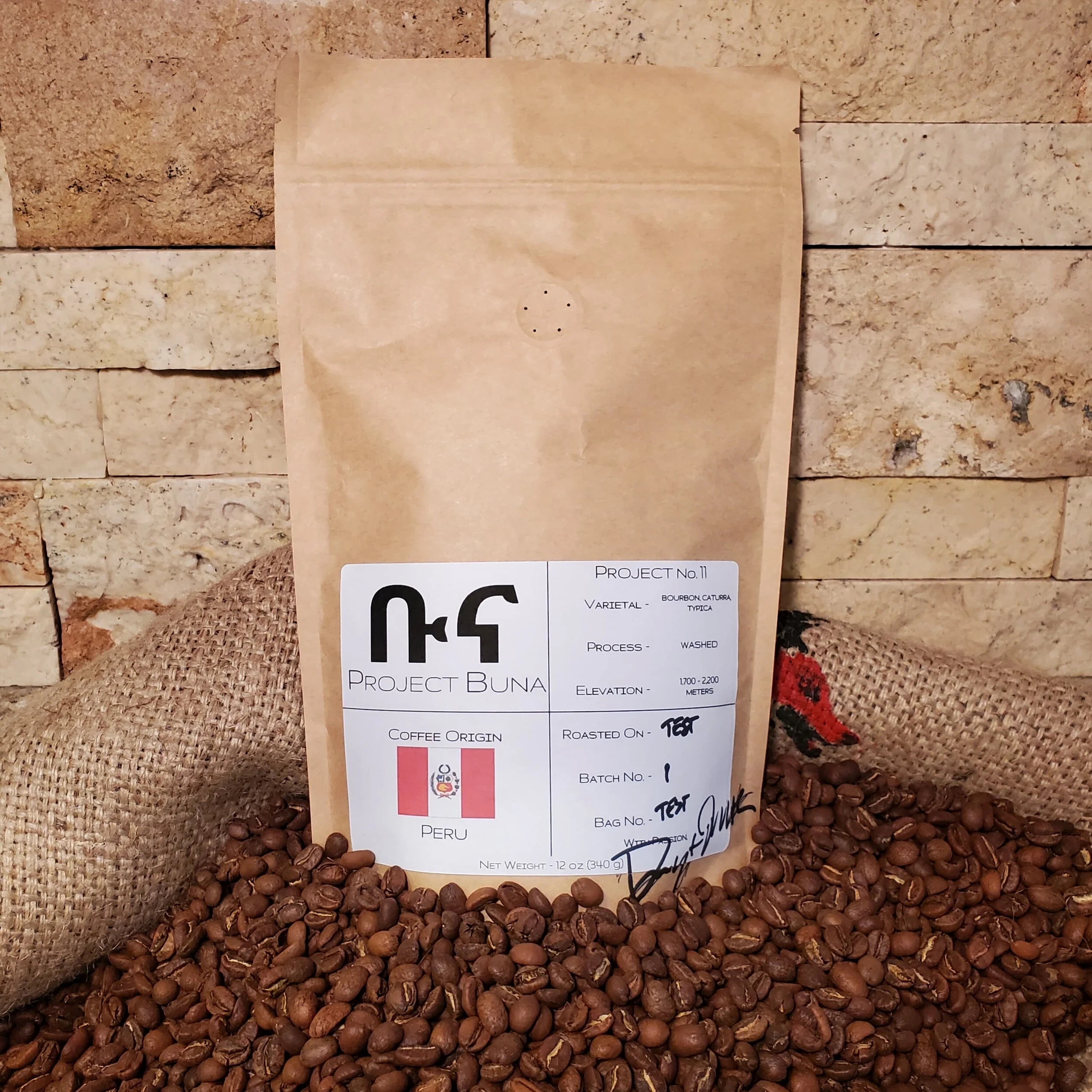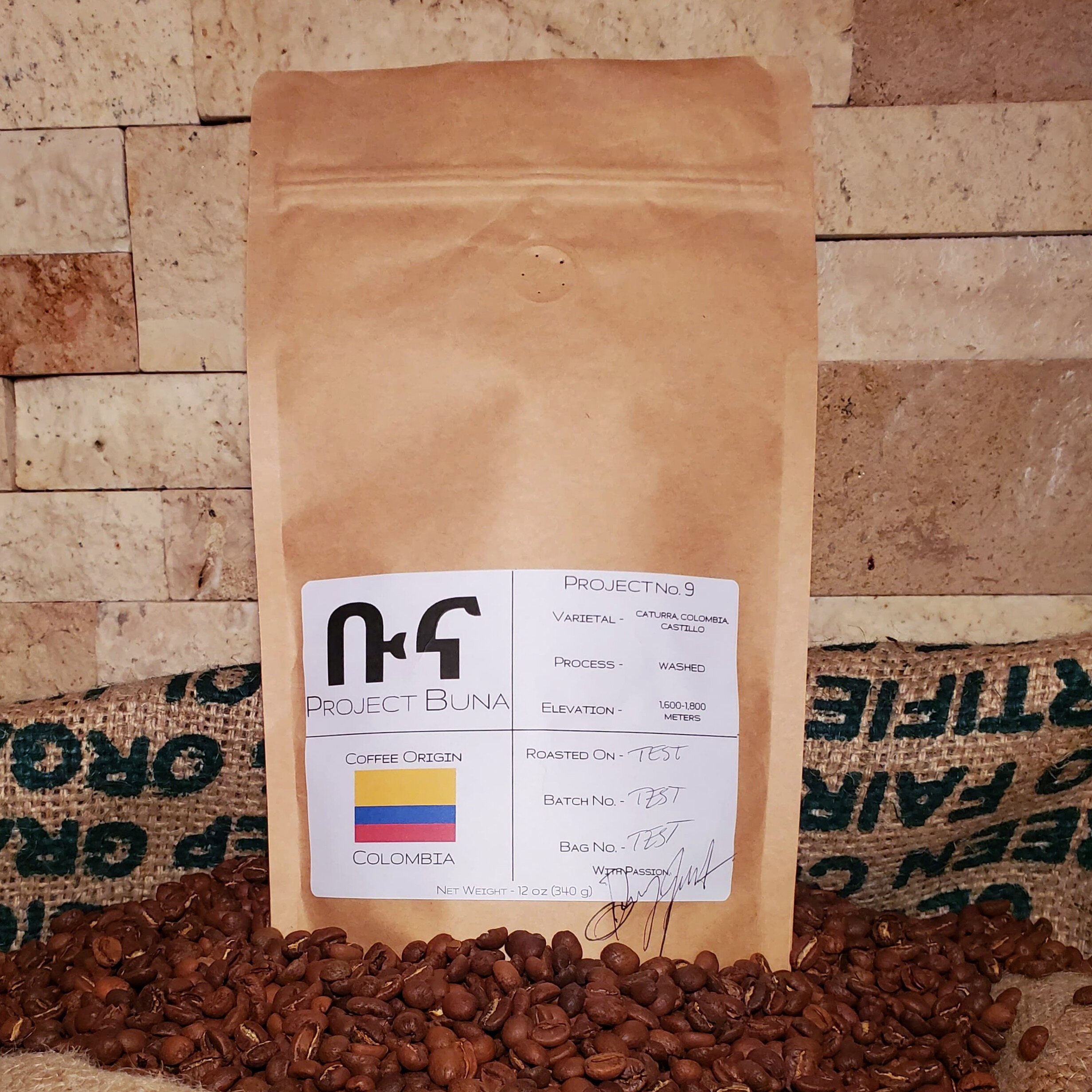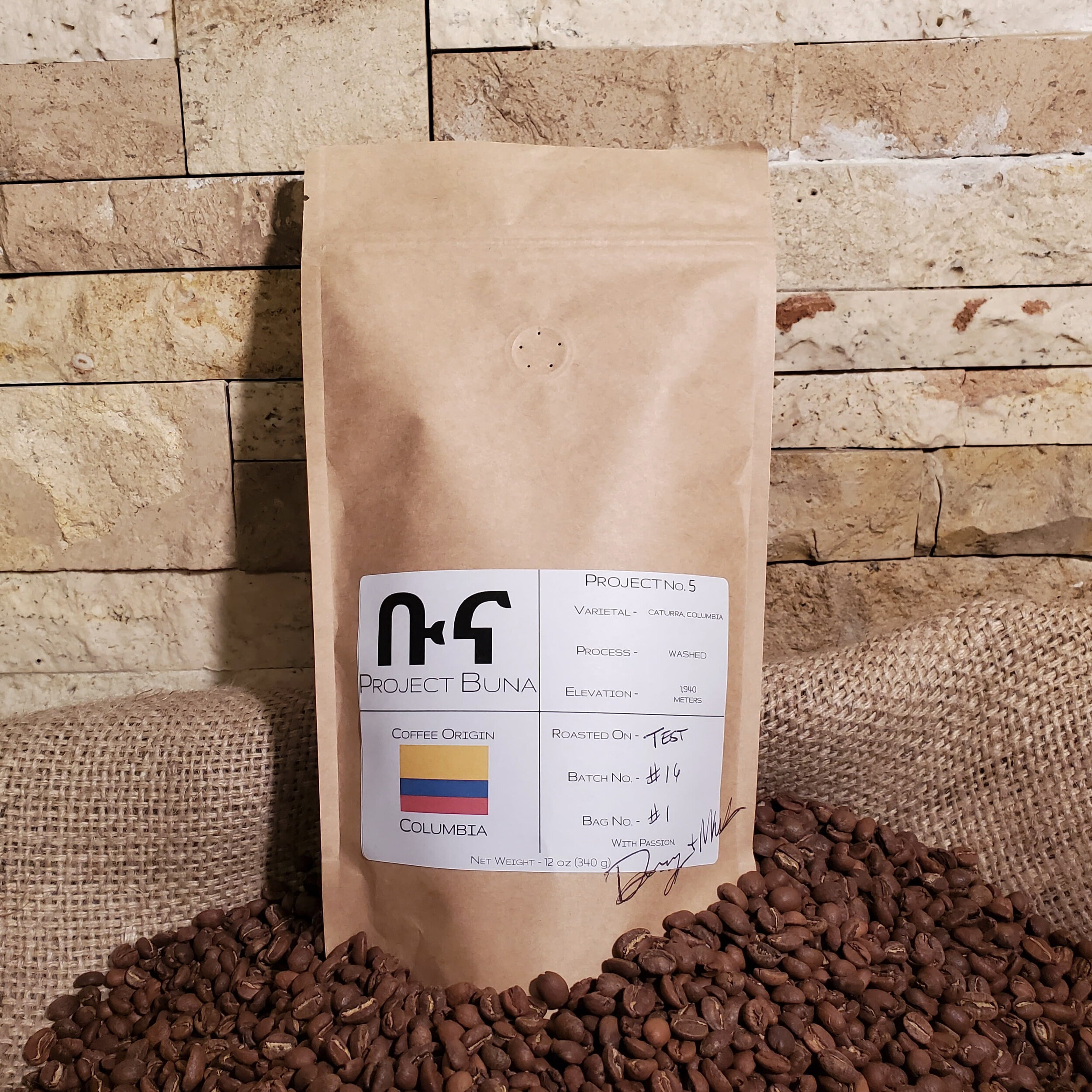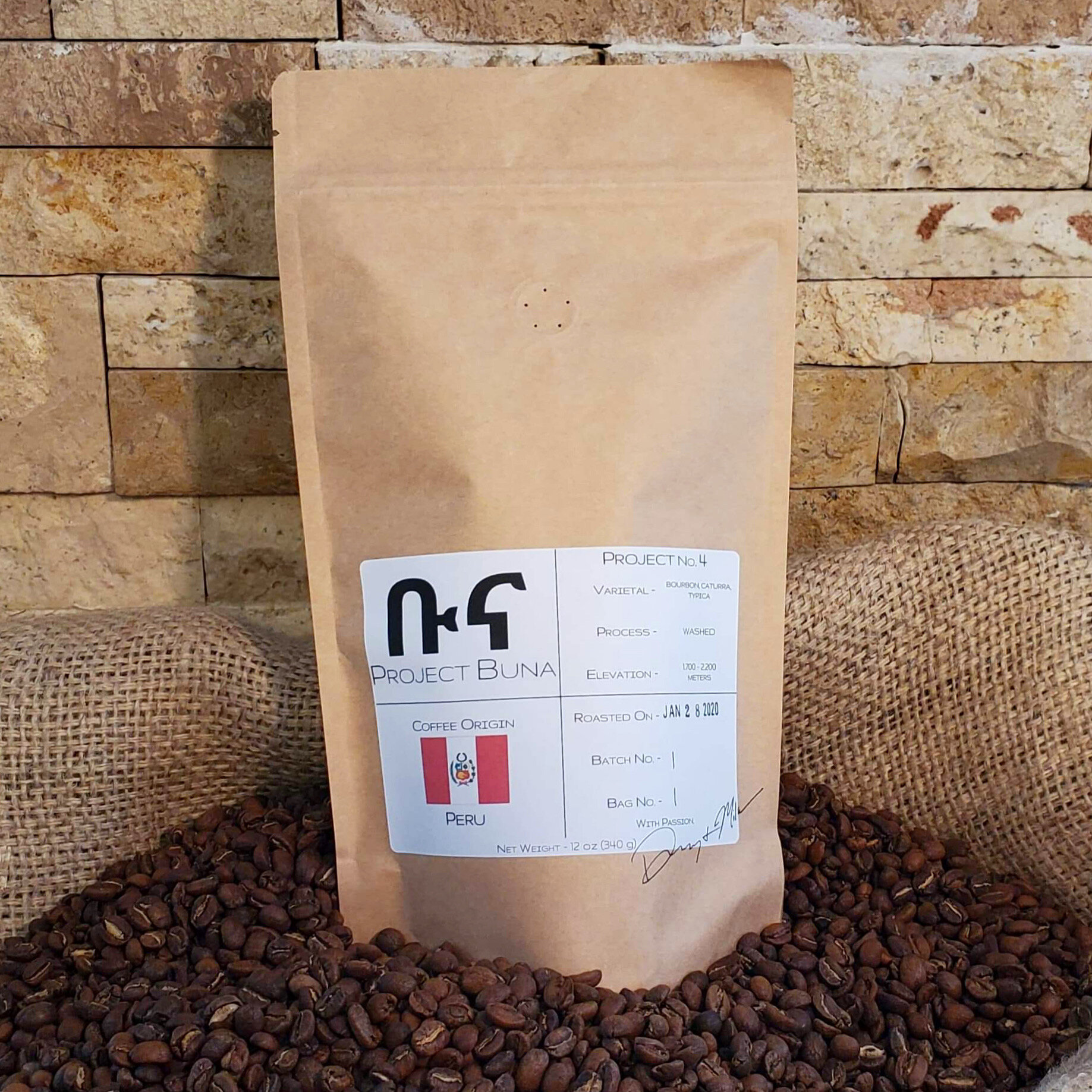Past Projects
Our goal with each project is to explore coffee, share experiences, and encourage our community to try something new.
Below are past projects that have rotated off our seasonal menu. We remember them fondly…
Project 13: Colombia, Honey Processed
Project 13 was from the El Pital municipality in the Huila Department of Colombia. The producers of this coffee, Grupo La Flora, comprise eight families near El Recreo, high along the Cordillera Central. Grown between 1800 and 2000 masl, the beans were a combination of Castillo, Caturra, Colombia, San Bernardo varietals and processed with the honey method. Donny tasted Salted Peanuts and Honey Nut O’s, while Mike tasted Sweet Peas and Peach Tea.
More on the processing method:
Project 13 was the first ever honey processed coffee to be on our menu! Also called “pulped natural,” the processing method is in some ways a hybrid of the natural and washed methods, combining techniques from both. After being picked from the trees, the coffee cherries are de-pulped and allowed to dry without washing (which saves the producers a lot of water). Some fruit is still left on the bean, but not all of it as in the natural process when the cherries dry in the sun intact. In the honey process, the bit of fruit remaining forms a golden, sticky mucilage that is reminiscent of honey (which is how the process got its name).
Project 12: Ethiopia
Project 12 was from Oromia, Uraga Woreda in Guji. Grown between 2000 and 2280 masl, these washed beans were a combination of JARC selections and indigenous landrace varietals produced by Kadir Jabril in Wate Gogugu. Donny tasted Tropical Fruits and Citrus Blossoms, while Mike tasted Key Lime Pie and Honey.
More on the origin:
This coffee was grown by “garden farmers,” meaning it was harvested from trees in the few hectares surrounding a farmer's home. Kadir Jabril is one of three brothers who are recognized as largely responsible for bringing coffees from the Uraga area of Guji to the specialty coffee world. Each of these brothers has their own washing station to process coffee, and Kadir’s is in Wate Gogugu to the far northwest. Most of these trees have only been producing coffee cherries for a few years, but the high elevations and careful processing produced a clean, complex cup!
Project 11: Peru
Project 11 was from the departments of Jaén and Puno in Peru. Grown between 1800 and 1900 masl, these washed beans were a combination of the Typica, Bourbon, Caturra, and Catuai varietals harvested between July and October. Donny tasted Sweet Malt and Tart Berry, while Mike tasted Rich Wine and Vanilla Cream.
More on the origin:
This coffee was sourced from a few different spots in Peru. A quarter of the coffee was from San Isidro in Puno. Another quarter of the coffee was from a producer named Elmer Guevara in the Jaén region. The final half of the coffee was from a producer named Yoel Samaniego, also in Jaén. Each of these coffee origins within Peru is special, grown with care and at high altitude. We think they mixed perfectly to result in Project 11, our second ever offering from Peru!
Project 10: Blend from Colombia & Ethiopia
This coffee was our first ever offered blend! Project 10 combined three different coffees before roasting, highlighting the different strengths and nuances of each. The blend was 45% a Colombian, 45% a washed Ethiopian, and 10% a natural Ethiopian.
The Colombian component was from Huila, grown at 1717 masl with a mix of Caturra, Colombia, and Castillo varietals, processed using the washed method. The washed Ethiopian component was a mix of JARC 74110/74112 varietals, grown in Jimma at 1900 to 2020 masl. The natural Ethiopian component was grown in the famous area of Guji at 2173 masl with Regional Landrace varietals.
Donny tasted Milk Chocolate Bars and Toasted Nuts, while Mike noted Summer Fruit and Baking Spices. This blend combined two of our favorite origins, and we were excited to offer something new with our tenth coffee on the menu since launching!
Project 9: Colombia
Project 9 was from the municipality of La Plata in the Huila department of Colombia. Grown between 1600 and 1800 masl, these washed beans were a combination of the Caturra, Colombia, and Castillo varietals harvested between September and December. Donny tasted Floral Honey and Nutty Chocolate. Mike tasted Peaches, Stone Fruit, and Milk Chocolate.
More on the origin:
This coffee was our third Colombian project in a row! It was produced by 18 smallholder farms, collectively known as Grupo La Plata. These farms are in Huila, the same department that our Project 5 came from, though a different municipality.
Project 8: Colombia
Project 8 was from the municipality of Planadas in the Tolima department of Colombia. Grown at 1920 masl, these washed beans were a combination of the Caturra, San Bernardo, Colombia varietals. Donny tasted Apricots, Cocoa, and Family Brunch. Mike tasted Lemons, Toast with Honey, and Roasted Almonds.
More on the origin:
This coffee was our second ever Colombian, and a great follow-up to the beloved Project 5. Considering the quality, we were surprised to learn that the producer Dairo Horta had only been selling coffee on the specialty market for the past few years. Plus, Dairo's farm is certified 100% organic! This coffee was a huge hit with our customers and we were sad to see it rotate off the menu so quickly.
Project 7: Burundi
Project 7 was from the Gashikanwa commune in the Ngozi province of Burundi. Grown at 1658 masl, these Bourbon-variety beans were harvested between April and June and processed using the washed method. Donny tasted Cinnamon, Warm Spices, and Boxed Chocolates. Mike tasted Sweet Cloves, Bright Lemon, and Cherry Cordial.
More on the origin:
The past year had been tough on Burundi coffee producers with climate patterns, plant cycles, and other factors combining to result in a harvest 80% less than what they typically expect. But this did not stop the farms of the Gashikanwa commune in northwest Burundi from producing coffees that won the top "Cup of Excellence" awards! This washed coffee processed at the Gashikanwa station embodied concentrated, bright flavors that many say are characteristic of the country. When we tasted a sample of this coffee on the cupping table, we knew instantly we wanted to bring it to you as one of our projects.
Project 6: Rwanda
Project 6 was from the Nyamasheke district in the Western Province of Rwanda. Grown between 1800 and 2100 masl, these Bourbon-variety beans were harvested Mid-Summer and processed using the washed method. Donny tasted Lemon Peel and other Big Citrus notes. Mike smelled Green Tea or Matcha, and tasted a combination of Mandarin Orange and Barley Tea (Mugicha, which we remember from our time living in Japan). These tea-like characteristics made Project 6 one of our most unique coffees so far.
More on the origin:
This coffee was from a lot harvested mid-summer 2019 and processed at the Kanzu washing station, in the Karambi Sector of the Nayamasheke District in southwest Rwanda. Near Lake Kiva, it is surrounded by hills reaching over 2200 meters above sea level (masl) where farmers raise their coffee trees in nutrient-dense volcanic soil, which is perfect for producing dense ripe coffee cherries.
For a long time, the Rwandan government mandated coffee producers participate in the commodity market, with low prices and no incentives for high quality. But after the civil war ended in 1994, outside NGO-funded projects reinvigorated Rwandan coffee farms by improving agricultural education and practices through cooperatives and training for farmers and quality control specialists. By 2000, these donor-supported programs were helping build hundreds of centralized processing stations and making significant investments to improve quality all along the chain. You could tell the work and care that had been put in, each time you tasted Project 6!
Project 5: Colombia
Project 5 was from the Nátaga municipality of the department of Huila in Colombia. Grown at 1940 masl, these beans were of the Caturra and Colombia varieties. They were harvested from October through December and processed using the washed method. We tasted Walnut Brownie, Dried Fruit, and Black Tea in this delightful coffee.
This vibrant coffee was grown on the farm "Finca La Gloria," high on the slopes of a lusciously green mountain in the Colombian Central Andes, southwest of the capital Bogota. One of three sisters who farm coffee, the producer Leonela Rivera has her property at the top of a steep and difficult trail from the town of Nátaga, which is not a common place to source coffee in the first place. Our partners met with Leonela and tasted her coffee (roasted in a pan and brewed there at the farm) back in October 2019; it was an instant decision to source her coffee!
Project 4: Peru
Project 4 was from the San Ignacio province in Peru. Grown between 1700 and 2200 masl, it was harvested between July and October and processed using the washed method. These certified NOP Organic beans were a mix of Typica, Bourbon, and Caturra varietals. Donny tasted Whiskey and Rich Berries, and Mike's notes were Chocolate-covered Cherries, Brandy, and Creme Brûlée.
More on the origin:
This coffee was sourced from the farms of nearly 300 coffee producers in the northern department of Cajamarca, which is known as the capital of Peruvian coffee. The exporter, Caravela Coffee, sources harvests from the multitude of small-scale growers throughout the region while also investing in infrastructure and development through their Grower Education Program, or PECA team. The coffee is grown in full shade, dried on patios or in covered beds, and processed using the fully washed method.
Project 3: Guatemala
Project 3 was from San José Poaquil in the Chimaltenango region of Guatemala. Grown between 1500 and 2000 masl, it was harvested between January and April and processed using the washed method. The beans in this roast were a mix of four varietals: Bourbon, Caturra, Pache, Catuaí. This resulted in a coffee that was easy drinking, rich, sweet, and full-bodied enough to stand up to milk and sugar. Donny's notes were Toffee, Baker’s Chocolate, Autumn Desserts. Mike's notes were Baking Spices, Toasted Nuts, Granola.
More on the origin:
The Los Santos project gathers coffee from smallholder farmers in the Chimaltenango region of Guatemala. Most of the farmers around San José Poaquil are indigenous, and speak the Kaqchikel dialect. Their coffee grows in clay mixed with volcanic soil and sandy loam, and they deliver it to two middlemen who run a wet mill. They, in turn, deliver parchment to Bella Vista Mill & Zelcafé - CCS’s exclusive partners in Guatemala.
The Bella Vista mill and farm is led by Luis Pedro Zelaya Zamora, a fourth-generation coffee producer. In 2000 he shifted the company’s focus on commercial production and exports to specialty coffee and microlots, and in 2013 they became CCS’s exclusive partner in Guatemala. The Bella Vista team supports its local communities by providing jobs for as many people as possible, maintaining and developing high standards of processing, negotiating good prices on exports, and by managing many of the fincas they buy coffee from.
Project 2: Ethiopia (Natural)
Project 2 was from Guji in Ethiopia. Grown around 2173 masl, it was harvested between November and January and processed using the natural method. The beans in this roast were a mix of JARC 74110 and 74112 varietals (more information below). This resulted in a coffee that surprised nearly everyone who tasted it, converting them to loyal fans instantly. Donny’s notes were Picked Strawberry, Cut Flowers, and Fresh Cream. Mike’s notes were Honey, Caramel, and Lime.
More on the origin:
This coffee came from 72 smallholder farmers who deliver to a private washing station called Dambi Uddo Agro-Industry PLC. It’s managed by Ture Waji, who used to be a quality consultant for Mormora Estate, and who we were actually able to connect with when we were featuring this coffee. Private stations like Dambi Uddo differ from the union/coop model primarily by the way they pay contributing farmers. Farmers buy coop membership; coops provide training and resources for improved farm practices and community life. Those farmers receive partial payment upon delivering cherry and an additional dividend once the coop sells the processed, dry-milled coffee. Ideally, the farmer takes home that extra money, but often it goes to paying back the bank loans (plus interest) they needed to join the coop to begin with.
The farmers who deliver to the Dambi Uddo washing station are paid upfront by kg/ cherry delivered, regardless of the future sale. The washing station also trains farmers in the summer, and hires about 80 seasonal workers who assist during harvest. Future plans include supplying seeds to farms, instituting contracts with farmers, pursuing certified organic status, and building a new washing station.
More on the varietal:
Ethiopian coffee plants represent wide genetic diversity: there are between 6 and 10,000 regional varieties found across the country. These ‘landraces’ (sometimes ‘heirloom’) varieties grow regionally within Ethiopia: the varieties found in Jimma will likely be different from those in Yirgacheffe to the southeast, which are different from those in Guji to the northwest, and so on. Many of them have not yet been classified, and even more to the point, traceability of lots in Ethiopia has been difficult or impossible until recent years, so we call them ‘landrace’ as an umbrella term referring to locally adapted, traditional varieties.
The Jimma Agricultural Research Center (JARC) has been working to research, classify, and develop new Ethiopian varieties since the 1970s. Their work has resulted in ~40 varietal selections referred to as ‘JARC improved’ coffees - two of which are in this selection. 74110 & 74112 both originate from trees found in forests near the Bishari village in the Metu woreda (often referred to as Metu-Bishari selections), and were selected for resistance to coffee berry disease, higher overall yields, and good growth at high altitudes. These selections are now some of the most-grown varieties in Ethiopia - 74110 is particularly notable for delivering the classic floral and citrus flavor profile.
Project 1: Ethiopia (Washed)
Project 1 was from the Jimma zone in the Agaro Region of Ethiopia. Grown between 1900 and 2020 masl, it was harvested between November and January and processed using the washed method. The beans in this roast were a mix of landrace varietals (more information below). This resulted in a bright, fresh coffee where Donny noted Spring Flowers, Milk Chocolate, and Red Berries, and Mike noted Stone Fruit, Citrus, and Marzipan.
More on the origin:
The Jimma zone of southwest Ethiopia used to be known for low-quality, dry- processed coffees that sold at the lowest rates. Coffees from the area were called ‘Jimma 5’ for infamously containing all 5 major coffee defects that come from farming problems: overripe beans (foxies), underripe beans (quakers), cracked beans, insect-eaten beans, and over-fermented, or rotten beans (stinkers). With the help of TechnoServe’s Coffee Initiative, about 115 farmers formed the Duromina Cooperative and purchased a wet mill in 2010.
Just two years later, Duromina coffee won the African Fine Coffee Association’s Taste of Harvest competition for Ethiopia. This was a huge achievement that allowed the coop to repay bank loans and get money directly back to farmers in almost record time. ‘Duromina’ roughly translates to ‘improve our lives’ or ‘make more money’ - clearly it worked.
The Duromina Cooperative is one of the largest coops in the Kata Muduga Union. It receives cherry from 329 union members, of whom 75 are women. These coffees are processed at one of three sites, each of which supplies drying beds and a wet mill. Our 2019 lot comes from Site 3, which happens to receive coffees from the highest elevations in the coop.
More on the varietal:
Ethiopian coffee plants represent wide genetic diversity: there are between 6 and 10,000 coffee varieties found across the country. These ‘landrace’ varieties have adapted to regional climates: the varieties found in Jimma will likely be different from those in Yirgacheffe to the southeast, which are different from those in Guji to the northwest, and so on. Many of them have not yet been classified, and even more to the point, traceability of lots in Ethiopia has been difficult or impossible until recent years, so we call them ‘landrace’ as an umbrella term referring to locally adapted varieties originally selected from wild coffee plants of Ethiopian forests.
